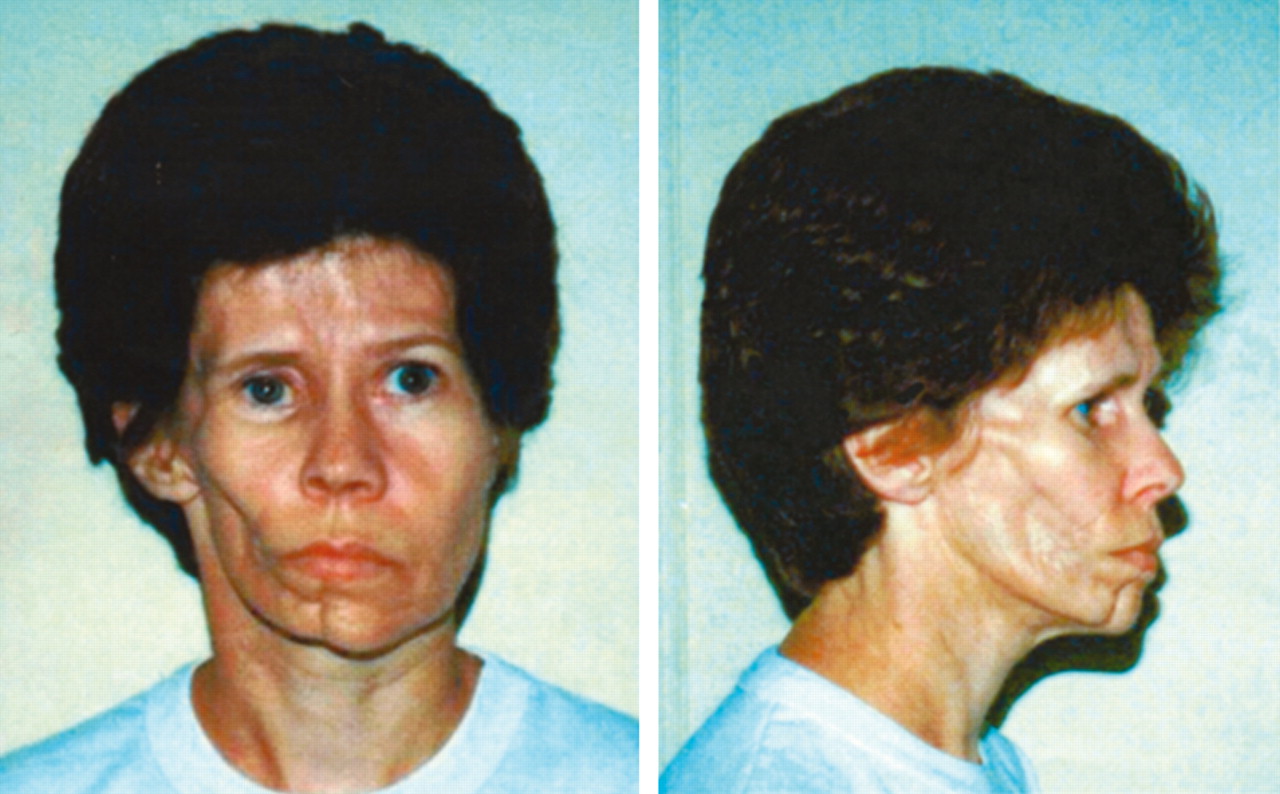
Parry-Romberg Syndrome is a rare condition that causes the gradual wasting away of the skin and soft tissues on one side of the face. This disorder, more common in females, usually begins in childhood or early adulthood. The exact cause remains unknown, but theories suggest trauma, autoimmune issues, or genetic factors might play a role. Symptoms can vary widely, from mild facial asymmetry to severe disfigurement. Besides physical changes, some individuals experience neurological problems like seizures and migraines. While there's no cure, treatments focus on managing symptoms and improving quality of life. Understanding this complex syndrome can help those affected navigate their challenges better.
Key Takeaways:
- Parry-Romberg Syndrome is a rare condition causing gradual facial atrophy, affecting females more than males. It can lead to neurological symptoms and vision problems, requiring a multi-disciplinary approach for management.
- While the cause of Parry-Romberg Syndrome remains unknown, it can have a significant psychological impact. Treatment focuses on managing symptoms, and further research is needed to develop effective treatments.
What is Parry-Romberg Syndrome?
Parry-Romberg Syndrome, also known as progressive hemifacial atrophy, is a rare condition that affects the face. It involves the gradual wasting away of the skin and soft tissues on one side of the face. Let's dive into some key facts about this intriguing disorder.
-
Definition: Parry-Romberg syndrome is a rare, acquired disorder characterized by slowly progressive shrinkage (atrophy) of the skin and soft tissues of half of the face.
-
First Description: The syndrome was first described by Caleb Hillier Parry in 1825 and later elaborated as a syndrome by Moritz Heinrich Romberg in 1846.
-
Synonyms: Parry-Romberg syndrome is also known as hemifacial atrophy (HFA), progressive facial hemiatrophy (PFH), and progressive hemifacial atrophy (PHA).
-
Incidence: The exact incidence of Parry-Romberg syndrome is unknown, but it is considered a rare condition.
Who is Affected by Parry-Romberg Syndrome?
This syndrome doesn't discriminate by gender or age, though some patterns have been observed. Here are some details about who is more likely to be affected.
-
Gender Predilection: The syndrome is more common in females than males, though the exact ratio is not well-defined.
-
Age of Onset: Symptoms typically begin in the first and second decades of life, with some cases occurring in adulthood.
How Does Parry-Romberg Syndrome Progress?
The progression of Parry-Romberg Syndrome can vary greatly among individuals. Understanding its progression can help in managing the condition better.
-
Progression: The atrophy progresses slowly over a period of 2-20 years, with the progression sometimes ceasing abruptly without apparent cause.
-
Affected Side: The atrophy typically affects one side of the face, with a slight propensity for the left side.
What are the Initial Symptoms?
Early signs can be subtle but are crucial for early diagnosis and management. Here are some common initial symptoms.
-
Initial Symptoms: The initial symptoms often include asymmetry of the face, with changes in skin color and texture, and sometimes cicatricial alopecia (scarring hair loss).
-
Skin Changes: The skin changes can resemble those of scleroderma, with skin discoloration and thickening.
What Tissues are Affected?
Parry-Romberg Syndrome doesn't just affect the skin. It can extend deeper into other tissues.
-
Soft Tissue Atrophy: The atrophy extends beyond the skin to include subcutaneous tissues, muscles, cartilage, and bones.
-
Muscle and Bone Involvement: As the disease progresses, muscles, cartilage, and bones in the affected area can also deteriorate.
Are the Eyes Affected?
The eyes can also show symptoms, which can be quite distressing for those affected.
- Ocular Involvement: Ocular symptoms are common, with enophthalmos (sinking of the eye into the orbit) being a frequent manifestation.
Are There Neurological Symptoms?
Neurological symptoms can complicate the condition further. Here are some common neurological issues associated with Parry-Romberg Syndrome.
-
Neurological Symptoms: Neurological symptoms occur in approximately 15-20% of patients, including seizures, migraine, trigeminal neuralgia, and weakness on one side of the body.
-
Seizures: Seizures are the most common neurological complication, and they can be refractory to treatment.
-
Headaches and Facial Pain: Ipsilateral headaches and facial pain are also common neurological symptoms.
How Does it Affect Vision?
Vision problems can arise due to the involvement of the eyes and surrounding structures.
-
Vision Problems: Vision problems can occur due to damage to the retina and optic nerve.
-
Brain Atrophy: Brain atrophy can be observed in some cases, which may contribute to neurological symptoms.
What Do Imaging Studies Show?
Imaging studies can reveal a lot about the extent and nature of the condition. Here are some common findings.
- Imaging Findings: Imaging studies such as CT and MRI can reveal atrophy of skin and subcutaneous tissues, intracranial calcifications, cerebral atrophy, deep and subcortical white matter lesions, encephalomalacia, hydrocephalus, meningeal and leptomeningeal enhancement, aneurysms, cortical thickening, and dysgenesis.
How is it Diagnosed?
Diagnosis involves a combination of clinical history, examination, and imaging studies.
-
Clinical History and Examination: Diagnosis primarily relies on clinical history and examination, supported by histopathologic and imaging studies.
-
Histopathologic Findings: Histopathologic findings may include atrophy of skin and subcutaneous tissues, with possible involvement of underlying muscular, cartilaginous, osseous, and glandular structures.
-
Radiographic Characteristics: Radiographic characteristics include atrophy of skin and subcutaneous tissues, intracranial calcifications, cerebral atrophy, deep and subcortical white matter lesions, encephalomalacia, hydrocephalus, meningeal and leptomeningeal enhancement, aneurysms, cortical thickening, and dysgenesis.
What are the Differential Diagnoses?
Differentiating Parry-Romberg Syndrome from other conditions is crucial for proper management.
- Differential Diagnosis: The differential diagnosis includes other conditions that cause facial asymmetry, such as linear scleroderma en coup de sabre.
How is it Treated?
While there's no cure, various treatments can help manage the symptoms and improve quality of life.
-
Treatment: There is currently no cure for Parry-Romberg syndrome, and treatment is directed towards managing specific symptoms.
-
Surgical Intervention: Surgery may be necessary to rebuild damaged tissue and skin, and in some cases, bone or muscle transplants may be required.
-
Medications: Immunosuppressant drugs and other medications may help manage neurological symptoms such as seizures and migraines.
What is the Psychological Impact?
The condition can have a significant psychological impact due to its disfiguring nature.
- Psychological Impact: The disfiguring nature of the disease can lead to psychological disturbance and communication disorders like speech defects and dental anomalies.
What are the Dental Anomalies?
Dental issues are common in individuals with Parry-Romberg Syndrome.
- Dental Anomalies: Dental anomalies such as smaller teeth with short roots are common in individuals with Parry-Romberg syndrome.
How is it Managed?
A multi-disciplinary approach is essential for managing the various aspects of the condition.
- Multi-Disciplinary Management: Prompt multi-disciplinary management is essential to address the various aspects of the disease, including development, aesthetics, speech, and masticatory function.
Are Limbs Affected?
In rare cases, the condition can extend beyond the face to affect the limbs.
- Rare Limb Involvement: In rare cases, the atrophy may also affect the limbs on the same side as the facial atrophy.
How Severe Can it Get?
The severity of Parry-Romberg Syndrome can vary widely among individuals.
- Variable Severity: The severity and specific symptoms of Parry-Romberg syndrome vary widely among affected individuals.
What Causes Parry-Romberg Syndrome?
The exact cause remains unknown, though several theories exist.
-
Unknown Etiology: The exact cause of Parry-Romberg syndrome remains unknown, though various theories include trauma, hereditary factors, infections, autoimmune causes, and vasculopathy.
-
Proposed Causes: Some proposed causes include trophic malfunction of the sympathetic system, abnormal embryogenesis, autoimmune and inflammatory mechanisms, and vasculopathy.
What Do Case Reports Show?
Case reports provide valuable insights into the variability and progression of the condition.
- Case Reports: Several case reports have documented the clinical and imaging findings in patients with Parry-Romberg syndrome, highlighting the variability in presentation and progression.
Are There Clinical Trials?
Participating in clinical trials can help researchers understand the disease better and potentially find new treatments.
-
Clinical Trials: Participating in clinical trials can help researchers understand the disease better and potentially find new treatments.
-
NIH Clinical Research Trials: Information about participating in clinical research is available through the NIH Clinical Research Trials and You program.
-
Clinicaltrials.gov: Learn about clinical trials currently looking for people with Parry-Romberg syndrome at Clinicaltrials.gov.
Where Can You Find Support?
Support from organizations and educational resources can be invaluable for those affected.
-
Organizational Support: Information about Parry-Romberg syndrome may be available from organizations such as the National Organization for Rare Disorders (NORD).
-
Educational Resources: Educational resources and support groups can provide valuable information and emotional support for individuals and families affected by the syndrome.
Why is Further Research Needed?
Further research is crucial to better understand and treat this complex condition.
- Research Needs: Further research is needed to understand the etiology and pathogenesis of Parry-Romberg syndrome, as well as to develop effective treatments for this complex condition.
Understanding Parry-Romberg Syndrome
Parry-Romberg Syndrome, a rare condition, brings unique challenges. Affecting one side of the face, it leads to progressive atrophy of skin, soft tissues, muscles, and even bones. Symptoms often start in childhood or adolescence, with a higher prevalence in females. The exact cause remains unknown, though theories suggest trauma, autoimmune factors, or vascular issues. Treatment focuses on managing symptoms, with surgical options for severe cases. Neurological complications like seizures and migraines are common, adding to the complexity. Psychological support is crucial due to the visible nature of the condition. Multidisciplinary care, involving dermatologists, neurologists, and plastic surgeons, can improve quality of life. Research continues to seek better understanding and treatments. Awareness and support from organizations like NORD can make a difference for those affected. Understanding this syndrome helps in providing better care and support for individuals facing its challenges.
Frequently Asked Questions
Was this page helpful?
Our commitment to delivering trustworthy and engaging content is at the heart of what we do. Each fact on our site is contributed by real users like you, bringing a wealth of diverse insights and information. To ensure the highest standards of accuracy and reliability, our dedicated editors meticulously review each submission. This process guarantees that the facts we share are not only fascinating but also credible. Trust in our commitment to quality and authenticity as you explore and learn with us.


